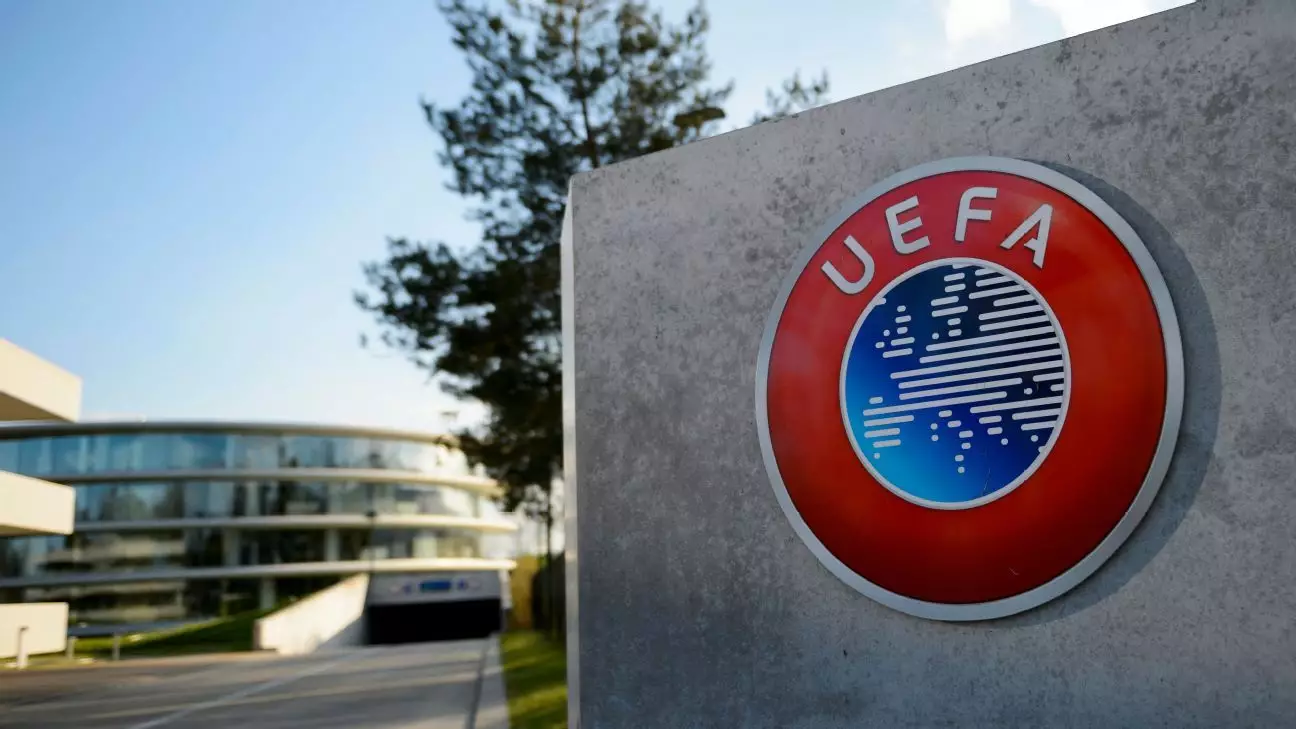In the ever-evolving sphere of European football, A22 Sports has boldly reentered the stage with the proposition of the Unify League, a new tournament designed to compete directly with prestigious UEFA competitions such as the Champions League, Europa League, and Conference League. This venture emerges in light of a recent European Court of Justice (ECJ) ruling, which determined that UEFA held a monopolistic grip over the landscape of football tournaments. Despite the potential for new competition within the confines of established legal frameworks, the path to realization for the Unify League remains fraught with challenges and skepticism.
The legal backdrop is crucial for understanding the implications of A22’s announcement. The ECJ’s ruling highlighted a significant paradigm shift—essentially stating that UEFA could not impede the establishment of new cross-border competitions as long as they adhered to specific guidelines. This includes the requirement for a qualification process that respects meritocracy and aligns with FIFA’s match calendar. However, competition and operational dynamics complicate this landscape, where A22 asserts that UEFA’s recently modified regulations continue to impose restrictive conditions on emergent tournaments.
At the heart of the dispute is the claim by A22 that UEFA’s limitations effectively coerced clubs into prioritizing UEFA’s competitions over potentially lucrative alternatives. This underscores a fundamental aspect of competitive sports: to challenge a dominant player in the market, one must not only innovate but also navigate a complex regulatory framework and various stakeholder interests.
While A22 proposes an inclusive tournament structure, the financial sustainability of the Unify League casts a long shadow over its prospects. A critical question emerges: how will this new league capture the lucrative revenue generated by established competitions like the UEFA Champions League? A22’s business model hinges on the creation of a dedicated streaming service, the Unify Platform, which purports to offer free access to matches with advertisement-driven revenue and optional affordable subscriptions.
This raises inherent skepticism. Existing broadcasters have yet to adopt a model centered around free-to-air games with commercial breaks, as it is presumed that such a model would fail to generate equivalent revenue streams that come from established rights deals. Furthermore, the idea of “affordable premium subscriptions” invites scrutiny regarding the acquisition of sufficient viewership to offset initial investment costs. With UEFA generating approximately €4.4 billion annually, A22 faces an uphill battle in attempting to replicate or surpass this revenue through an untested model.
A22’s tournament structure boasts multiple leagues designed to maximize competition. The proposed model includes a Star League and a Gold League, each comprising sixteen teams with group stages and playoffs leading to a finale. On paper, this expanded format could generate more games and thus higher viewer engagement. However, this raises concerns regarding match quality and the potential for repetitive fixtures that could dull the excitement of rivalries over time.
Moreover, within this framework lies the stipulation that qualification for these leagues must be merit-based and open to all. This, paradoxically, risks alienating high-profile clubs accustomed to guaranteed placements in elite competitions. The landscape could open itself to unpredictability, where storied teams face relegation or failure to qualify, creating a potential disruption that could deter clubs from abandoning the tried-and-true UEFA framework.
It is essential to recognize that the Unify League’s emergence is as much a power play as it is a genuine attempt to innovate within European football. A22, by openly challenging UEFA, is pushing for dialogue. Still, the lack of ample support from key clubs challenges their strength. The absence of commitment from numerous elite teams raises questions about the league’s attractiveness and perceived value.
Moreover, if clubs find themselves divided, participating in parallel leagues, the resultant dilution of talent could fracture fan engagement, leading to wider implications for the sport. This competition could produce a situation that results in the deterioration of both entities, leading to what some may envision as a “mutually assured destruction” of both leagues’ profitability and status.
The road ahead for the Unify League is rife with uncertainty. While the proposition presents an innovative concept, its actualization depends upon navigating a minefield of legal, financial, and competitive challenges. Prospective participants must weigh the allure of a fresh tournament against established revenue streams, historical prestige, and fan loyalty, creating a delicate balance of interests that will dictate the future of European football.
Ultimately, A22’s audacious proposal illustrates the tensions inherent in institutionalized sports in the modern era. It provokes critical discussions about monopolistic practices, financial sustainability, and the ever-influential fan experience. As further developments unfold, both the Unify League and UEFA must adapt to a changing landscape where collaboration, competition, and innovation converge.

Leave a Reply